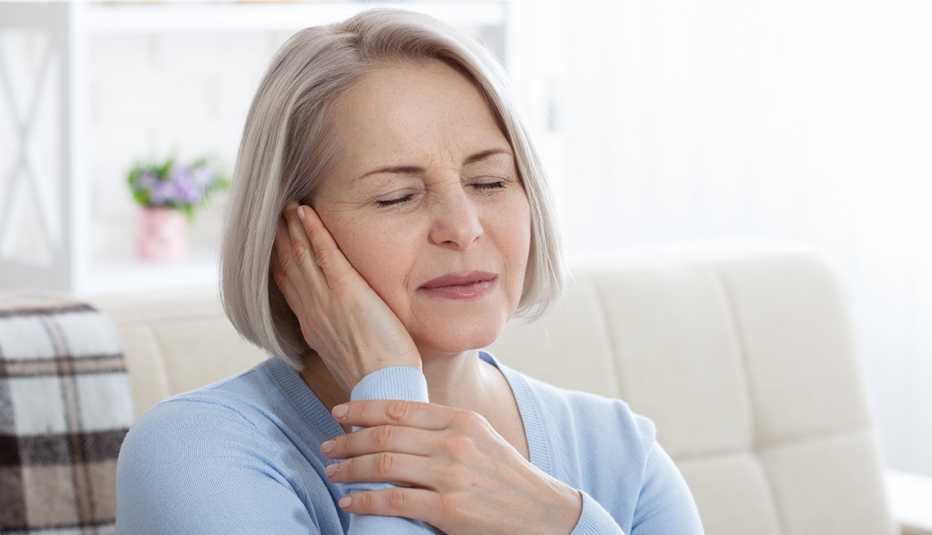AARP Hearing Center


Key takeaways:
- Ear pain is commonly related to dental problems like TMJ.
- Swimmer's ear can cause redness and swelling in the ear, but it's easily treated.
- Too much earwax can block your ear canal and cause hearing loss.
- Sudden changes in air pressure can be irritating and damaging to your ears.
- Ill-fitting hearing aids can create discomfort in your ear canal.
- Adult ear infections are usually worse than those kids get.
- A ruptured eardrum will usually heal on its own.
If you thought being an adult meant you’d outgrown ear pain, think again. While ear pain in kids can be typically caused by ear infections, in adults it’s usually a symptom of something else that might not even originate in the ear, experts say.
“Most of the time when your ear hurts, it’s not your ear’s fault,” says Oliver Adunka, M.D., director of the Division of Otology, Neurotology, and Cranial Base Surgery at The Ohio State University Wexner Medical Center. A visit to an ear, nose and throat doctor (an otolaryngologist) can help identify what’s causing your pain, and it’s often an easy fix, Adunka says.
What is ear pain?
Ear pain, also known as otalgia, often feels sharp or stabbing, and it can be mild or severe. Contact your health care provider if the pain lasts more than three days, or if you have blood or drainage from your ear, ringing, or sudden dizziness or hearing loss.
Why does my ear hurt?
Here are some common ear pain causes and what you need to know about each.
1. A jaw disorder (or toothache)
If you have ear pain that’s sharp, “like someone is stabbing your ear,” it may be caused by a temporomandibular disorder (TMD), Adunka says. It’s also called TMJ because it affects the temporomandibular joints just in front of your ears that connects your jaw to your skull. TMJ can develop if you grind your teeth or if arthritis wears away the cartilage around your jaw joint, Adunka explains, and when you’ve had recent orthodontic work.
Because your jawbone is near a major nerve that radiates back to your ear, the pain often manifests as repeated episodes of ear pain and tenderness. “If it’s on one side, then goes to the other side and comes back, it’s usually TMD,” Adunka says. Toothache pain can also spread to your ears.
If your doctor thinks your ear pain is caused by jaw or tooth problems, they’ll probably refer you to a dentist, who may fit you with a mouth guard or recommend other dental treatments.



































































More From AARP
9 Tips to Help You Adjust to Hearing Aids
View our tips for getting accustomed to the devices
New Treatment for Tinnitus Can Help Bring Relief
A recently approved method using mild electrical pulses helps retrain the brain to ignore the phantom noise
Your Smart Guide to Hearing Health
23 ways to keep hearing clearly